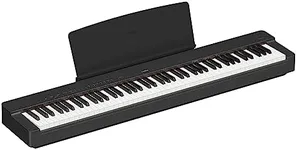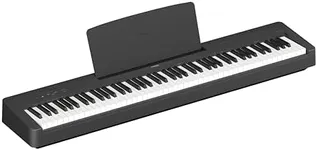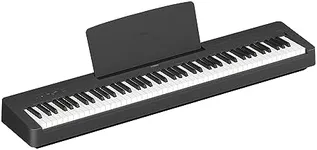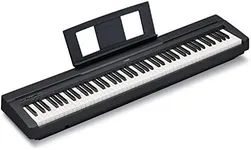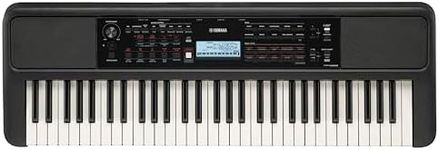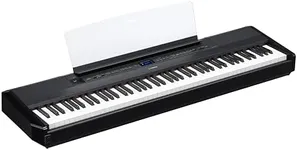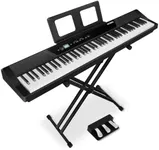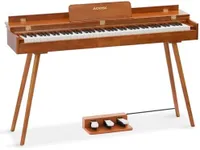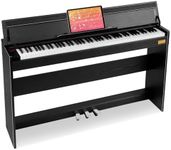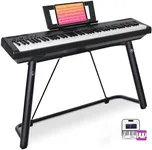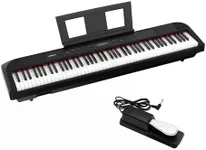Buying Guide for the Best Yamaha Keyboards
Choosing the right Yamaha keyboard can be a rewarding experience if you know what to look for. Yamaha offers a wide range of keyboards suitable for beginners, intermediate players, and professionals. To find the best fit for you, it's important to understand the key specifications and how they align with your needs and playing style. Here are some key specs to consider when selecting a Yamaha keyboard.Number of KeysThe number of keys on a keyboard can range from 25 to 88. Full-sized keyboards have 88 keys, which is the same as an acoustic piano and is ideal for classical and advanced players. Keyboards with 61 or 76 keys are more compact and suitable for beginners or those with limited space. If you are just starting out or need a portable option, a 61-key keyboard might be sufficient. For more advanced playing and a wider range of music, consider a 76 or 88-key keyboard.
Touch SensitivityTouch sensitivity refers to how the keyboard responds to the force with which you press the keys. This feature is important for expressive playing, as it allows for dynamic control over the volume and tone. Keyboards can have non-touch sensitive keys, touch-sensitive keys, or weighted keys. Non-touch sensitive keys are suitable for beginners, while touch-sensitive keys are better for those who want more expressive control. Weighted keys mimic the feel of an acoustic piano and are ideal for serious players or those transitioning from a traditional piano.
PolyphonyPolyphony is the number of notes a keyboard can produce at the same time. Higher polyphony allows for more complex and layered sounds without notes cutting off. Basic keyboards may have 32-note polyphony, which is sufficient for simple melodies. Intermediate keyboards often have 64-note polyphony, suitable for more complex pieces. Advanced keyboards can have 128-note polyphony or higher, which is ideal for professional use and intricate compositions. Consider your playing style and the complexity of the music you intend to play when choosing the polyphony.
Voices and TonesVoices and tones refer to the different instrument sounds a keyboard can produce. Yamaha keyboards offer a wide range of voices, from pianos and strings to synths and drums. Beginners might be satisfied with a keyboard that has a few basic voices, while more advanced players might want a keyboard with hundreds of voices for greater versatility. Think about the types of music you want to play and whether you need a variety of sounds to keep your practice and performances interesting.
Built-in Learning FeaturesMany Yamaha keyboards come with built-in learning features such as lesson modes, lighted keys, and interactive tutorials. These features can be incredibly helpful for beginners who are learning to play on their own. If you are a beginner or looking to improve your skills, a keyboard with these features can provide valuable guidance and make learning more enjoyable. More experienced players might not need these features and can focus on other specifications.
Connectivity OptionsConnectivity options include USB ports, MIDI ports, and audio outputs. These allow you to connect your keyboard to computers, other instruments, and sound systems. USB and MIDI ports are useful for recording and composing music on a computer, while audio outputs are important for live performances. If you plan to use your keyboard for recording, composing, or performing, make sure it has the necessary connectivity options. For casual playing, fewer connectivity options might be sufficient.
PortabilityPortability is an important factor if you need to move your keyboard frequently. Lighter and more compact keyboards are easier to transport and store. If you plan to take your keyboard to lessons, gigs, or practice sessions outside your home, consider a model that is easy to carry. For home use, a larger and heavier keyboard might be acceptable, especially if it offers more features and a better playing experience.
